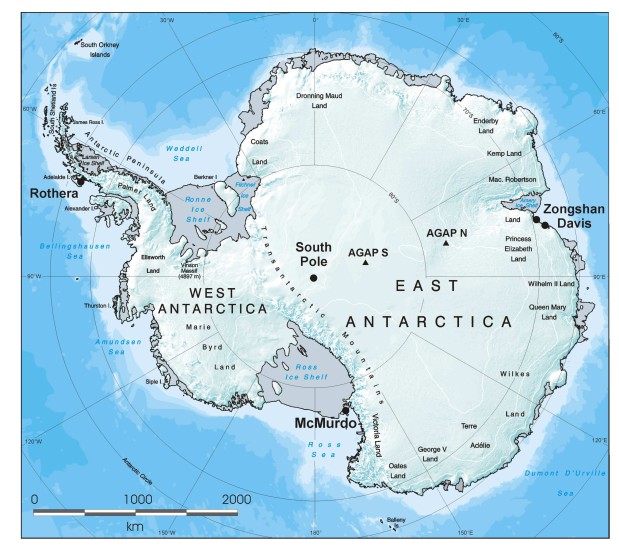The logistics mission
The logistics Mission — making the science happen
Years of planning and intense co-operation between national Antarctic operators were required to mount this hugely ambitious scientific expedition. Fuel, food, tents, weather havens, equipment and other supplies at two deep-field camps, known as AGAP North and AGAP South ensured that the science teams could work safely and effectively in the sub-zero temperatures.

Two strands of scientific operation, utilising several aircraft conducting between 80 and 100 survey flights, were required to build the picture of what lies beneath the ice:
- The aerogeophysics teams, (GAMBIT) led by Lamont Doherty Earth Observatory (LDEO) and British Antarctic Survey scientists involves two survey aircraft.
- The seismic team, (GAMSEIS) led by the Washington University and Penn State scientists, will use a US Antarctic Programme utility Twin Otter to deploy and service 26 seismometers on the ice.
Preparing to go
Two science teams carried out an aerogeophysical survey. The British Antarctic Survey (BAS) — Australian Antarctic Division team worked from one of the deep-field camps known as AGAP-North. The US-German science team worked from AGAP-South.
Preparations were complex. On 13th October BAS Field GA Catrin Thomas departed from Hobart with Australian colleagues sailing to the Australian Davis Station on the coast of East Antarctica.
On 1 November 2008, Fausto Ferraccioli, Hugh Corr, Tom Jordan and Carl Robinson left the UK bound for New Zealand for onward transfer to the US McMurdo Station. A few days later pilots Doug Cochrane & Ian Potten flew the science survey Twin Otter FBL from BAS Rothera Research Station to McMurdo with engineer Kyle Hegedus. Both science teams met and begin field season preparations, including cargo retrieval, final mission planning and snow school training. The science survey aircraft was equipping for survey and the systems tested during the following two weeks. Then the field team transferred to the US Amundsen-Scott Station at South Pole to begin acclimatization before heading to the deep-field camps.
Meanwhile in mid-November BAS chief Pilot Alan Meredith and engineer Jamie Neggars left BAS Rothera in support Twin Otter FAZ bound for the Australian Davis Station. Together with Catrin and Australian colleagues they loaded cargo and departed for AGAP-North to set up the camp in preparation for the science team’s arrival. An AWI German National Program Basler aircraft also assisted in setting up camp.
At the end of the season
An essential requirement of the Antarctic Treaty is that science field camps are decommissioned, and all waste removed, at the end of the surveys. The Chinese science team as part of their 2008 traverse from their Zhongshan station on the East coast of Antarctica collected and removed the empty drums and packaging and padding from the fuel drops.